Downtown dilemma: What’s happening with these 5 vacant Akron buildings?
Downtown Akron is now home to five vacant or nearly empty buildings collectively saturating the market with 1 million square feet of mostly office space that looked more profitable before the pandemic.
The Beacon Journal’s tally of 1,008,557 square feet of empty office space doesn’t include the two tallest skyscrapers in downtown Akron: the 28-story, 325,792-square-foot Huntington Tower, which has been on the market since 2019, or the 23-story, 300,328-square-foot 1 Cascade Plaza, where intervention by public and private officials staved off a lengthy tax foreclosure case this year. These towering office buildings on Cascade Plaza, which is also home to the empty City Center Hotel, have been quoted as nearly half empty in recent years.
In the shadow of Huntington Tower, FirstEnergy Corp. is buying out the 10-year lease at its 15-floor, 424,000-square-feet downtown headquarters immediately north of Cascade Plaza. With 90% of employees still working from home, the energy company will move everyone to the West Akron campus on White Pond Drive, leaving another giant office building empty in the heart of downtown.
FirstEnergy has yet to acquire the deed. When asked about future plans to sell or redevelop one of Akron’s largest holdings of Class A office space, company spokeswoman Jennifer Young said: “It’s too soon to speculate what that may encompass, but we remain committed to transitioning from the downtown Akron office.”
Chris Burnham with the Development Finance Authority told the Beacon Journal last month that the plan is to sell 1 Cascade Plaza for redevelopment as offices or residences in the next couple of years. A spokesperson for Huntington Bank did not comment on the development status or vacancy rate at the company’s white tower on the plaza, other than to confirm that it hasn’t sold.
Here’s the background and current development status for each of the five largest, completely empty office buildings in downtown Akron.
City Center Hotel
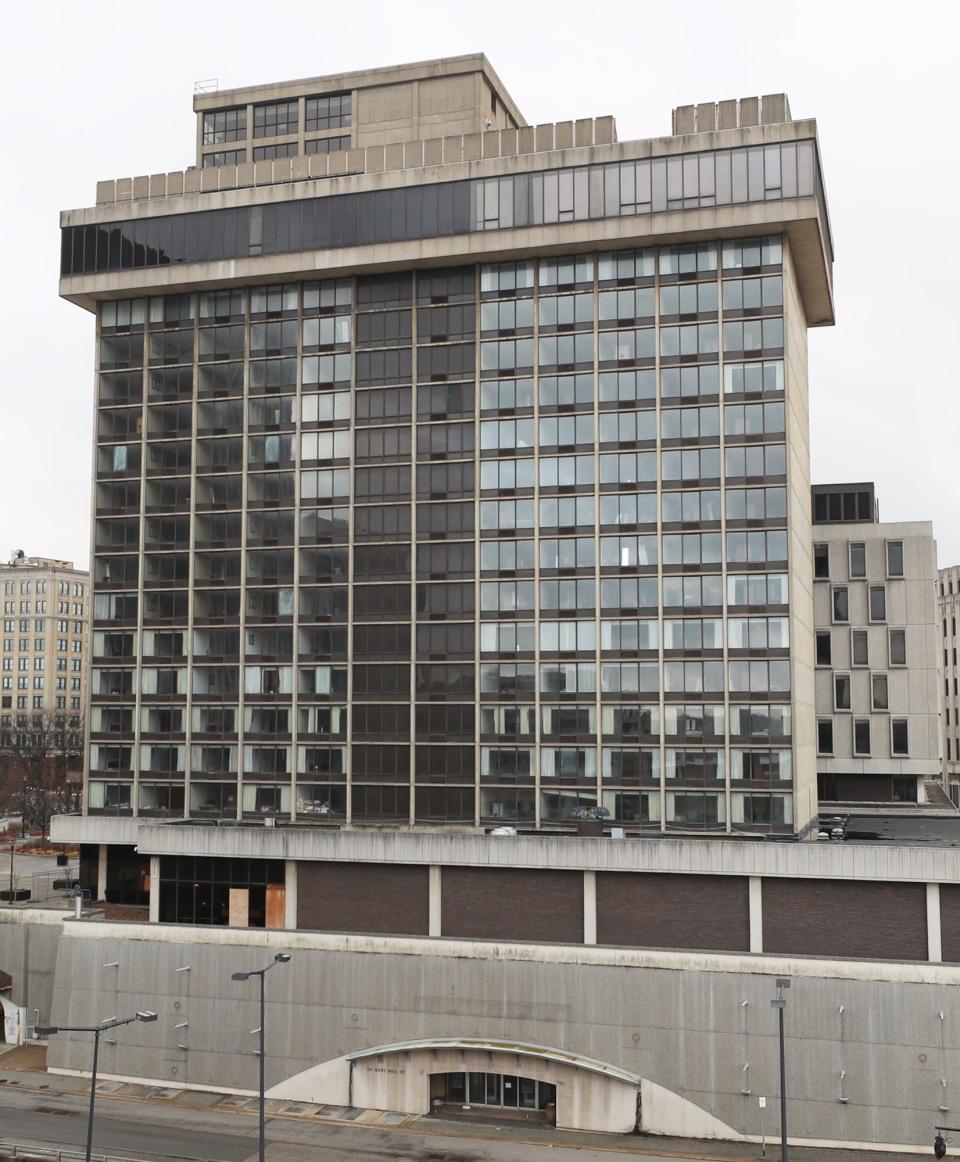
Former Beacon Journal Editor Ben Maidenburg introduced the developers who built and opened the Cascade Holiday Inn on Mill Street in 1971.
The president of the Ruhlin Co. — partnering on the project in a broader effort to build out Cascade Plaza — dubbed the 20-story hotel at 20 W. Mill St. a “baby United Nations building.” Industrialist David Brennan — “The Wizard of Main Street" — purchased the 306-room hotel with a 66-inch-diameter crystal chandelier in the lobby for $900,000 in 1993.
After a $7.5 million renovation, the new 243-room hotel emerged as Ramada Plaza Hotel in 1996 and was renamed the Radisson Hotel Akron City Centre in 1998.
Texas businessman Jack Saheid took over in 2011. Saheid told officials he lacked the money to fix the fire suppression system after multiple citations from the Akron Fire Department.
The hotel closed abruptly in the winter of 2016-17.
Developer Joel Testa pitched plans in 2018 to develop 146 modern units, luxury lofts and a rooftop bar. Brennan, who would have handled the financing as a 50-50 partner, died that year. His wife, Ann, wasn’t a developer.
A pin that stuck through the pandemic was put in the project, Testa said.
Ann died in July. Testa has reengaged the Brennan family to move forward with the project, which would stay true to Testa’s original plan to create more affordable apartments than the luxury units he and other developers offer elsewhere downtown.
CitiCentre
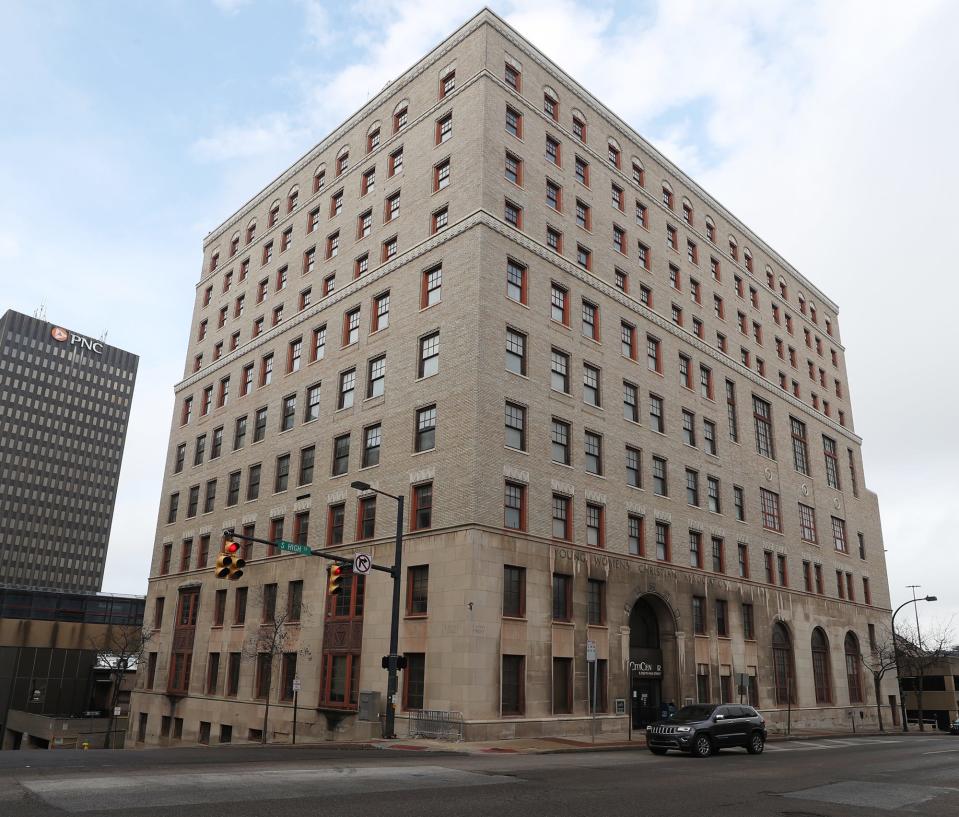
Akron administrators, having just launched an aggressive tax break program for the development of residential property, had high hopes for new apartments in its CitiCenter office building adjacent to City Hall.
Weston Inc. of Cleveland placed the only bid to buy the old YWCA building from the city for $2.6 million in 2018. Cleveland-based developer Ed Asher personally took over the project to rehab the 113,400-square-foot building, which was constructed in 1933 as a rooming house for single and indigent women.
The $20 million redevelopment plan grew from 60 apartments to 95 apartments for $28 million. To qualify for tax credits, the building would have to be 90% empty for two years. So, the city moved its staff to right-size its footprint and closed the indoor swimming pool and the former CitiCenter Athletic Club.
Asher secured $3 million in historic tax credits in December 2020 and said construction would start the following June.
Then, as demand for office space plummeted and the developer worked with the city to hedge its bet, nothing happened. Asher is no longer on the project.
The city has now brought in Welty Building Co., whose owner Don Taylor led the renovation and historic preservation of six buildings in the The Bowery on Main Street during the pandemic.
The plan now is “100% apartments,” Taylor said. No offices. No street-level shops.
While rising interest rates drive up borrowing and construction costs, cutting into margins, Taylor is designing 117 apartments or more with hopes to list the cheapest at $1,200 to $1,500 a month.
A response on the reapplied historic tax credits should arrive before Christmas with Taylor’s timeline of more than 12 months of construction beginning by July.
Quaker Square
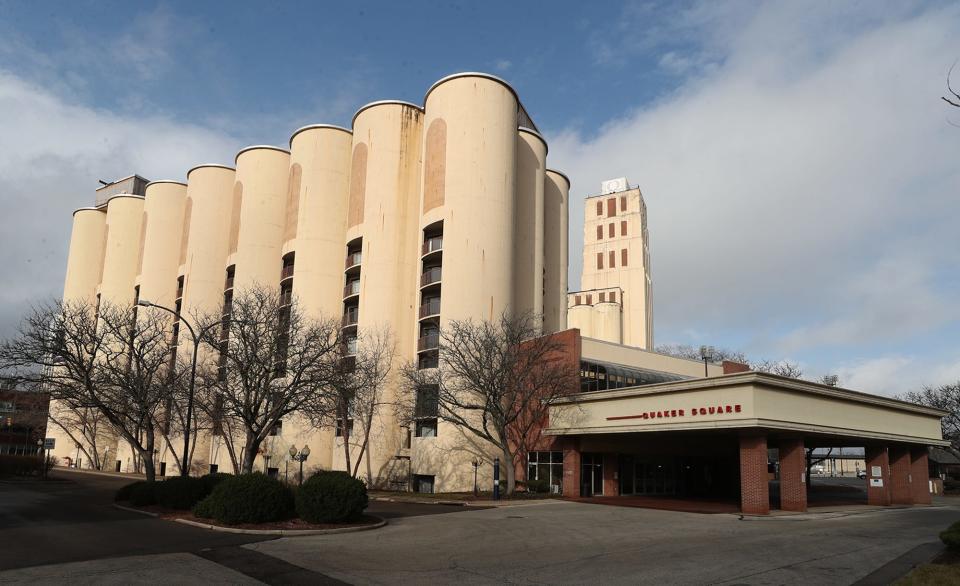
Originally a Quaker Oats factory built in 1932 with 36 round silos designed to store grain, Quaker Square was developed by private investors into a dining, shopping and entertainment complex that opened in 1975.
UA bought Quaker Square from Akron businessman Jay Nusbaum in 2007 for $22.7 million, setting aside rooms for a short-lived student residence hall and renting the rest under the name Quaker Square Inn, which closed in 2013.
UA Dining Services continues to cater ticketed and other events at Quaker Station. But retailers in the arcade quickly closed up shop, first the Pie Factory and Schumacher’s Restaurant and, finally, Quaker Square General Store and NewsStand Comics in 2015.
A “small footprint of tenants” still occupy office space in Quaker Square, a UA spokesperson said. The hotel with round silo rooms briefly served as quarters for sick students during the COVID-19 pandemic. And the future of the entire complex is still to be determined.
“We are still working with a prospective buyer and it is progressing,” said Cristine Boyd, senior director of External Communications for UA. “The city of Akron is involved in terms of some of the tax mechanisms that might be available to the developer.”
44 E. Exchange
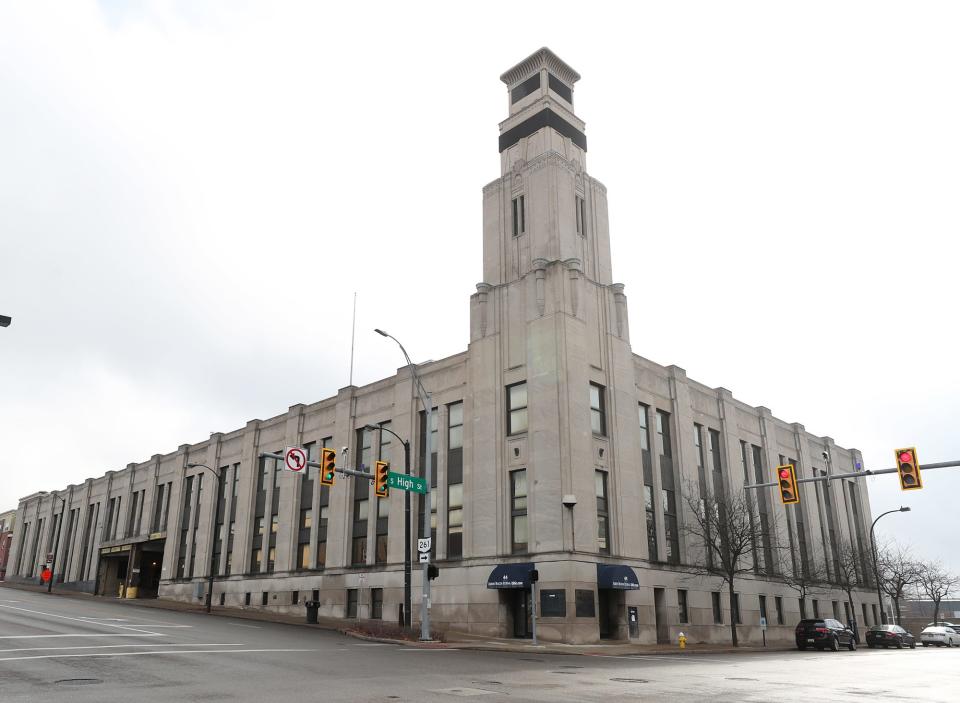
Black Press sold the Akron Beacon Journal to newspaper chain GateHouse Media in 2018. The sale did not include the old ABJ building. (GateHouse later acquired and assumed the Gannett name.)
The newspaper moved to the seventh floor of the AES Building in late 2019 and, after two years on the market, Black Press sold 44 E. Exchange St. to Capstone Development Co., a developer out of Birmingham, Alabama, for $1.1 million in July 2020.
Original development plans included apartments and then offices. Capstone founder Michael Mouron successfully lobbied city officials in 2021 to list the property on the local historic registry, unlocking tax breaks for redeveloping old buildings. But after proposals that included a new Akron Police Department, a FedEx Custom Critical site and an apartment complex all fell through, Mouron sought to sell the building for $2 million to his sons, who own The Standard, a mixed-use retail and apartment complex next door. The sons planned to demolish the building and put up a parking lot, which unnerved city officials, historians and activists.
In June, Akron City Council unanimously denied Mouron’s request for permission to demolish the building. Mouron and a local architect behind the plan were not available to comment on Capstone’s next move.
The developer could appeal the denial of the demolition request, come back to the Akron Planning Department with another proposal or seal a deal with prospective buyers who were still mulling the property this summer.
Morley Health Center
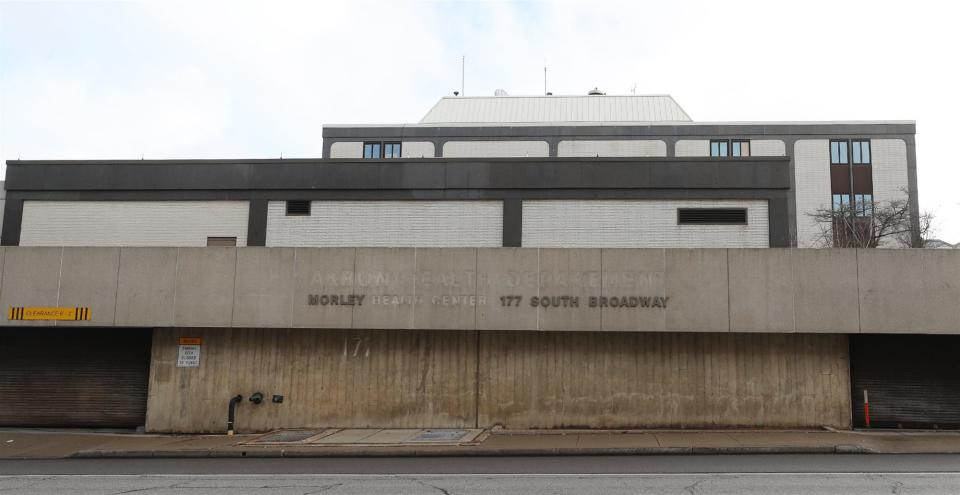
Named after Akron Health Commissioner John DeWitt Morley, the Morley Health Center opened in 1969 to house the city’s health department.
During recession-era consolidation in 2011, the county absorbed the city health department and the center closed.
After taking office, Mayor Dan Horrigan and city judges sized up the 277,864-square-foot building for a new courthouse until architects discovered that building on the parking-deck foundation would be structurally and financially unsound. The city first entertained legislation in 2016 to demolish the building.
Earlier this year, Akron Public Schools explored the space as a permanent home for the STEM High School, which leases space from the University of Akron. The city briefly considered the site for a new police station, which remains a possibility following the proposed $350,000 demolition of the existing structure.
In mid-November, the city applied for the demolition funds from the Ohio Department of Development.
Emails with comment or tips regarding this article can be sent to bjnews@thebeaconjournal.com.
This article originally appeared on Akron Beacon Journal: A look at the status of 5 major vacant buildings in downtown Akron

